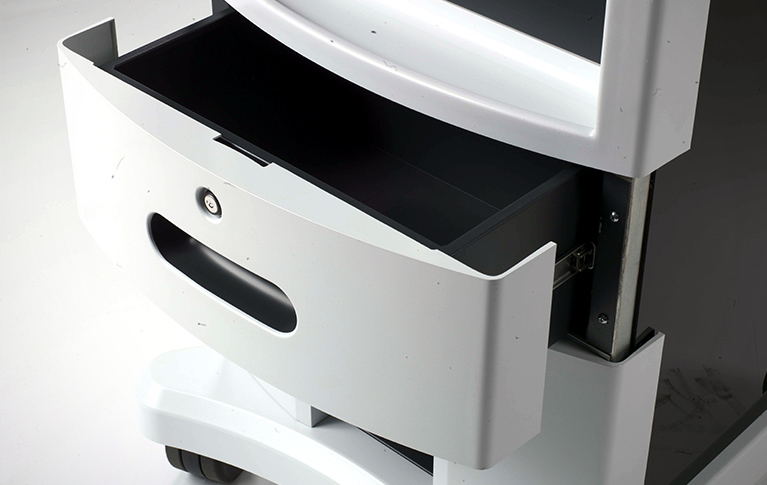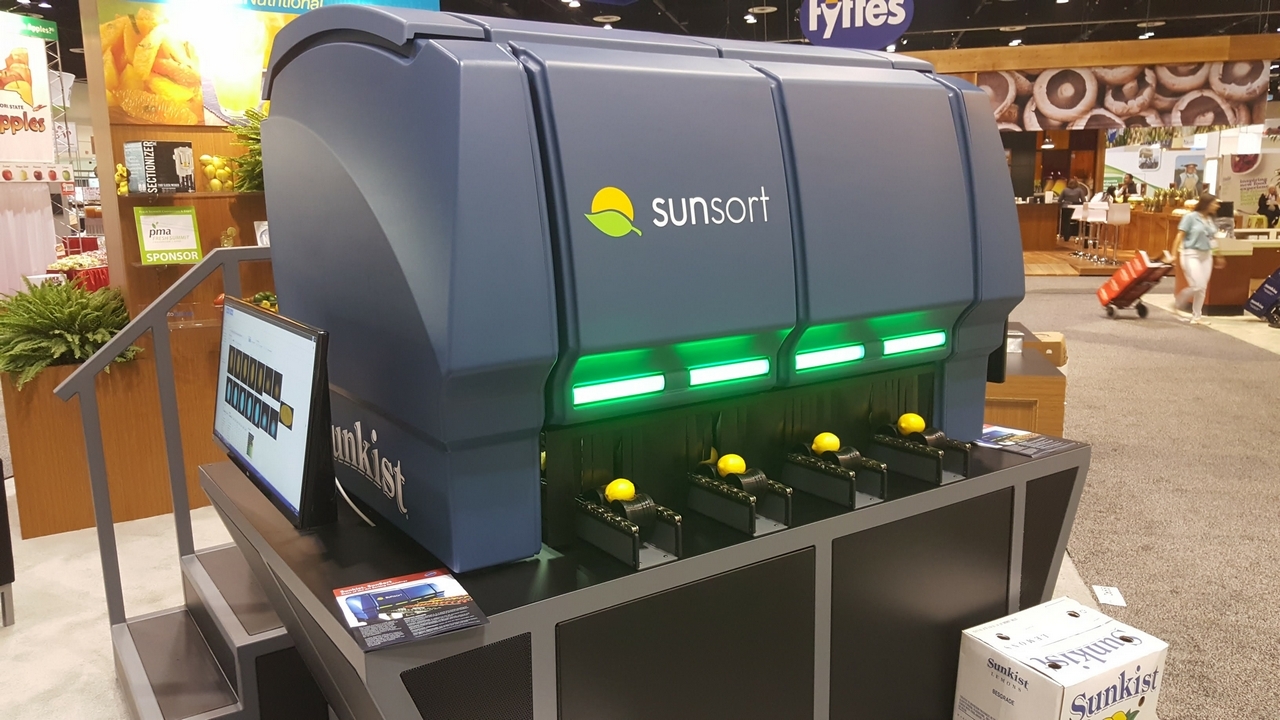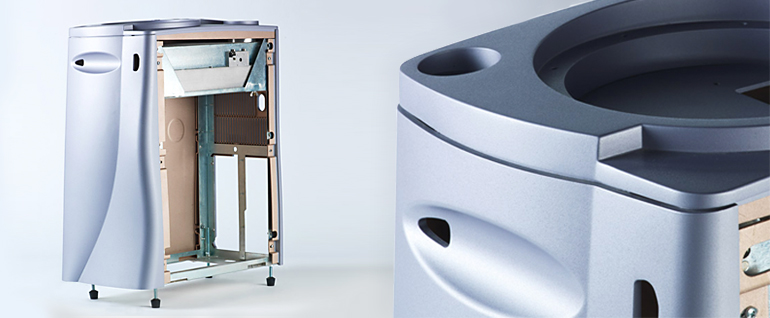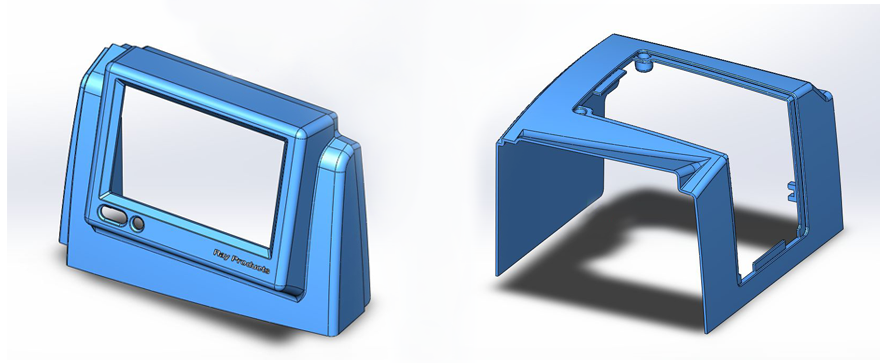For more than 70 years, Ray Products has built a reputation as a premier provider of pressure formed plastic parts. With a commitment to constantly upgrade our facilities with the highest quality equipment and latest technology, today we can manufacture custom plastic parts using our advanced, heavy-gauge pressure forming process, delivering the highest quality in the business while reducing tooling costs and turnaround times. With our experience, Ray Products will help guide what pressure forming is, the advantages of pressure forming, and what makes Ray Products a complete partner for your next project.


With the ability to combine multiple custom components into a single, seamless product, along with incredible cost-effective processing and the ability to replace fiberglass and steel, large part thermoforming opens up new vistas for manufacturing in volumes ranging from hundreds to thousands. No matter what the industry—transportation and mass transit, farming and agriculture, green energy, waste and water management, medical devices, or more—large part thermoforming can redefine what is possible for your business.
#1 – Large Part Thermoforming is Significantly More Cost-effective than Steel or Fiberglass Fabrication
The technology behind large part thermoforming has grown so efficient in recent years that many materials that once necessitated either fiberglass, steel, or a combination of multiple parts can now be streamlined into one cost-effective thermoformed plastic part. Let us pass on this savings to you. Large part thermoforming allows for tremendous efficiency as it transforms many high-dollar parts into one large, single, rigid and lightweight thermoformed plastic part.
#2 – You Have the Same Freedom of Material Choice with Large Part Thermoforming
Just as you might do with other smaller-scale thermoformed parts, large part thermoforming likewise allows you to choose the material type (any thermoplastic) color, thickness, and finish of your plastic material. Your project is only limited by your imagination, and a 10’ x 18’ forming area! The possibilities are essentially endless as you explore the same freedom of choice in large part thermoforming, particularly as the needs of your custom plastic project grow and become more complex. As your business grows, part-to-part repeatability will become more and more important, as well.
#3 – Large Part Thermoforming Yields Superior Molded Detail and Offers Seamless Part Repeatability
Large part thermoforming is synonymous with repeatability and superior molded detail, which is what your industry demands. You care about aesthetics, reliability and repeatability, which is why large part thermoforming could be ideal for your next project. When upgrading to large part thermoforming from fiberglass or steel, better aesthetics are often the natural result, largely because the material colors and finishes deliver a large seamless part.
We haven’t even mentioned the significance of light-weight options that large part thermoforming offers your business. Whether you need to thermoform 10-feet by 18-feet or smaller, large part thermoforming can transform the possibilities for custom parts manufacturing.

For people in the citrus industry, it’s common knowledge that Sunkist’s SunSort line of citrus sorters are the top of the line. So when the company was ready to upgrade the enclosure on its latest model from in-house sheet metal to a modular thermoformed design, we were thrilled to help.
The new thermoformed designs were able to help Sunkist improve durability, cut manufacturing costs and time, and help the new units stand out from the competition. Read our full case study on these vacuum-formed enclosures or head over to Plastics News, where you can read the whole story.

Medical Design & Outsourcing is running an article by our CEO Brian Ray that brings together ancient Egyptian spoons, thermoforming and 3D printing.
No, seriously.
Turns out that ancient Egyptians were some of the first thermoformers. Today, the modern version of a 5,000-year-old technique is helping to power everything from electric vehicles to cutting-edge medical devices. All at a cost that makes it easy to make the jump from prototyping to production.
Hopefully when The Mummy reboots in 2017, it’ll feature Tom Cruise discovering some thermoformed ancient Egyptian artifacts, shortly before he’s attacked by the undead. Fingers crossed.

This article originally appeared in the May 2015 issue of Design2Part magazine. You can download a PDF of the original here.
By Rebecca Carnes
Supplying heavy-gauge, large-part pressure forming at lower quantities has insulated Ray Products from having to face much overseas competition. The simple reason, according to Jason Middleton, the company’s vice president of sales and development, is that heavy-gauge, large-part pressure forming doesn’t outsource well. (more…)

This article originally appeared in the April, 2015 issue of Design2Part Magazine. You can download a PDF of the original here.
By Rebecca Carnes
Specializing in thermoformed plastic parts, Ray Products Co., Inc. understands the unique qualities needed for medical device enclosures, such as durability, aesthetics, and built-in, antimicrobial resistance. The Ontario, Calif.-based company has been manufacturing enclosures for more than 60 years, and focuses on translating that experience into high-quality medical devices. These devices include medical electronics housings; imaging (X-Ray, CT Scan, MRI) enclosures; sterile packaging; bins and trays; hospital room panels; hospital bed components; and stands and support equipment.
Medical device enclosures make up the bulk of Ray Products’ medical business, and pressure-formed and vacuum-formed enclosures can be found on surgical and diagnostic equipment in healthcare facilities across the country. (more…)

When it comes to manufacturing medical device enclosures, there are several processes to choose from. We know we’re a bit biased, but more often than not, pressure formed plastic really is the best option for medical device enclosures.
Here are 9 reasons why.
#1: Cost at Quantity
When you factor in both tooling and production costs, pressure forming quite often has the lowest total cost of any other process in volumes of the high-hundreds to mid-thousands. These are very common quantities in medical device enclosure manufacturing.
#2: Large Part Capability
Our pressure forming machines can create single pieces up to a full 10’x6’, with up to 40” of depth. That’s the type of size you need when you’re creating enclosures for things like MRI, CT and X-Ray machines, or ancillary equipment like beds and chairs.
#3: Huge Material Selection
When you’re pressure forming, you can choose from literally hundreds of materials. These materials can come with properties like excellent impact protection, V-0 flammability ratings and even built-in antimicrobial resistance. The same thermoplastic materials that are used for injection molding are commonly used in pressure forming. (more…)

3D printing is big news, and it’s no wonder. Just a few years ago, the idea of printing directly from a CAD file to a 3D physical object in a matter of minutes was preposterous. Today, it’s entirely possible.
With so much coverage in the press and popularity online, we’re sometimes asked, “Is 3D printing cutting into your business?” The very truthful answer is, not at all. In fact, it can be quite helpful.
You see, 3D printing is excellent at what it does, but what 3D printing does is quite different from what thermoforming does.
Thermoforming is a very cost-effective process once you’re planning to produce quantities of a few hundred parts up into the mid-thousands. When potential customers ask us to produce a single prototype, we usually refer them to 3D printing or other prototyping processes to help ensure manufacturability in thermoforming. This way, when they’re ready for that production run, there’s going to be no question which method is right for them. (more…)